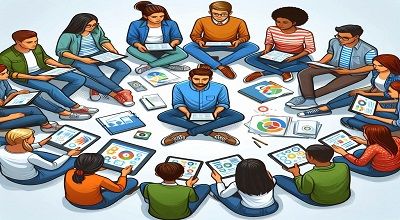Portfolios (E-portfolios)
Portfolios, especially e-portfolios, are like digital treasure chests showcasing your skills, achievements, and experiences. They’re a dynamic way to present your professional or academic journey. Imagine a curated collection of your best work, reflections, and maybe even a touch of your personality.
Whether you’re an artist, a writer, a coder, or anything in between, an e-portfolio lets you tell your story in a way that a resume or CV can’t. It’s not just about listing achievements but giving them context and showing how you’ve grown.
Plus, it’s a living document. You can update it as you learn, accomplish new things, or even just refine your style. What do you think? Interested in putting one together?
Portfolios (E-portfolios) in Education
E-portfolios in education are like a digital academic journey. They’re a modern way for students to showcase their skills, projects, and growth throughout their learning experience. It’s not just about grades; it’s about capturing the process of learning and development.
Think of it as a personalized learning diary that includes not only the final polished projects but also reflections on the learning process. It encourages students to think critically about their work, set goals, and demonstrate how they’ve met them. It’s a holistic approach to education documentation.
For teachers, it’s a powerful tool to assess not just what students know but how they’ve applied their knowledge. It fosters a more interactive and engaging way of evaluating and understanding a student’s progress.
And the best part? It prepares students for the digital world they’ll be navigating in their future careers. What are your thoughts on this intersection of education and technology?
Characteristics of Portfolios (E-portfolios) in Education
E-portfolios, or electronic portfolio, have become increasingly popular in education due to their versatility and ability to showcase a student’s work and achievements.
Here are some key characteristics:
- Digital Format: Unlike traditional portfolios, e-portfolio are digital, allowing for easy access and sharing through online platforms.
- Multimedia Integration: E-portfolios can incorporate various types of media, such as text, images, videos, and audio. This multimedia approach provides a richer representation of a student’s skills and accomplishments.
- Reflective Learning: E-portfolio often include reflective components where students can analyze and discuss their own work, demonstrating a deeper understanding of their learning experiences.
- Accessibility: Being online, e-portfolios can be accessed anytime, anywhere, making it convenient for students, teachers, and potentially even employers to review and assess the portfolio.
- Showcasing Progress: E-portfolio can be dynamic, allowing students to update and add new work over time. This enables the continuous showcasing of progress and development.
- Customization: Students can personalize their e-portfolios, selecting the content and layout that best represents their skills, achievements, and personality.
- Assessment Tool: E-portfolio serves as an assessment tool, allowing educators to evaluate students’ skills, knowledge, and growth over time. This assessment can be formative or summative.
- Goal Setting: E-portfolios often include sections for setting and tracking goals, encouraging students to take an active role in their learning and development.
- Collaboration: Some e-portfolio support collaborative features, enabling students to work together on projects and share their collective achievements.
- Integration with Learning Management Systems (LMS): E-portfolio can be seamlessly integrated into existing learning management systems, streamlining the process of creating, sharing, and assessing portfolio within the educational environment.
Final Words
These characteristics make e-portfolios a valuable tool in modern education, fostering a more interactive and reflective learning experience.
